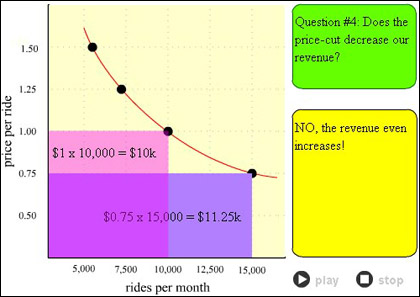1. Using the typical 'Facebook' lingo, write a definition for Microeconomics and then provide a standard English translation for your 'Facebook' definition. Microeconomics is the economics of households and individuals. Microeconomics- The part of economics concerned with single factors and the effects of individual decisions
Title: Role of Money - M11
1. Using what you learned about the three functions of money, explain how 'play money' differs from 'real' money? Real money is a medium of exchange, unit of account, and a store of value. Play money has none of these characteristics.
2. Money has no actual value other than the value we attach to it. The barter system would still be practiced today if the participants did not agree to set a value on a piece of printed paper that represented the value of the goods and services they had to offer. What would you accept in place of money, if someone wanted to 'buy' your most prized material possession? I would accept anything that would appreciate in value and not depreciate.
Circular Flow Model - M11
1. What does a circular flow model tell us? What the circular flow model tells us is that three basic elements of the economy will work and interact together to ensure that our needs and wants are provided for.
2. What is the role of households in the three sector circular flow model? Households provide businesses with payments in exchange for jobs and goods and services. They also pay taxes to the government and hold the four factors of production.
3. What is the role of businesses in the three sector circular flow model? Businesses provide income, goods, and services to households. They also pay taxes, supply goods and services to the government.
4. What is the role of government in the three sector circular flow model? The government supplies services to houses and income. They also give services and payments to businesses.
5. What role do households have in the factors or resource market (inputs)? They own the four factors of production.
Title: Law of Demand and Law of Supply - M12
1. For each event described below, explain what happens to either the demand or supply curve. (increase/decrease? Shifts left or right?)
(a) What happens to the demand for chicken if concerns about mad cow disease lead to widespread euthanizing of cows on U.S. cattle farms? The demand for chicken rises because it is a good substitute for beef and cows are becoming less and less.
(b) What happens to the supply of orange juice if Florida is hit with very severe weather? The supply for orange juice will decrease because there would be no oranges to make the juice.
(c) In the market for coffee, severe global weather systems destroy 30% of the coffee bean crop. Supply will decrease
(d) In the market for cereal, if the price of cardboard material used to package cereal increases. The supply will decrease unless consumers are willing to pay more money for that cereal.
2. For each part below, EXPLAIN what happens to equilibrium quantity and price(increase or decrease?).
a) In the market for doughnuts, if they were found to be a major contributor to high cholesterol in adults. Demand and supply will drop resulting in a new equilibrium price.
b) In the market for doughnuts, if widespread unemployment continues. A shift in supply to the left because less doughnuts will be produced and the price will drop on them.
c) In the market for doughnuts, if Krispy Kreme introduces a new whole wheat 'low-calorie' doughnut. The demand and supply curve will shift to the right resulting in a higher equilibrium price.
3. What are two factors that can change the quantity demanded? Provide an example for each. Buyers income change, consumer preferences change.
4. What are two factors that can change the quantity supplied. Provide an example for each. Number of buyers goes up or down, more suppliers enter the market.
Reflection: What are two questions that you have about standards M11 and M12.
1. Why do social networking websites sell information.
2. Approximately how much is information sold for?
Please include at least 2 relevant visuals





